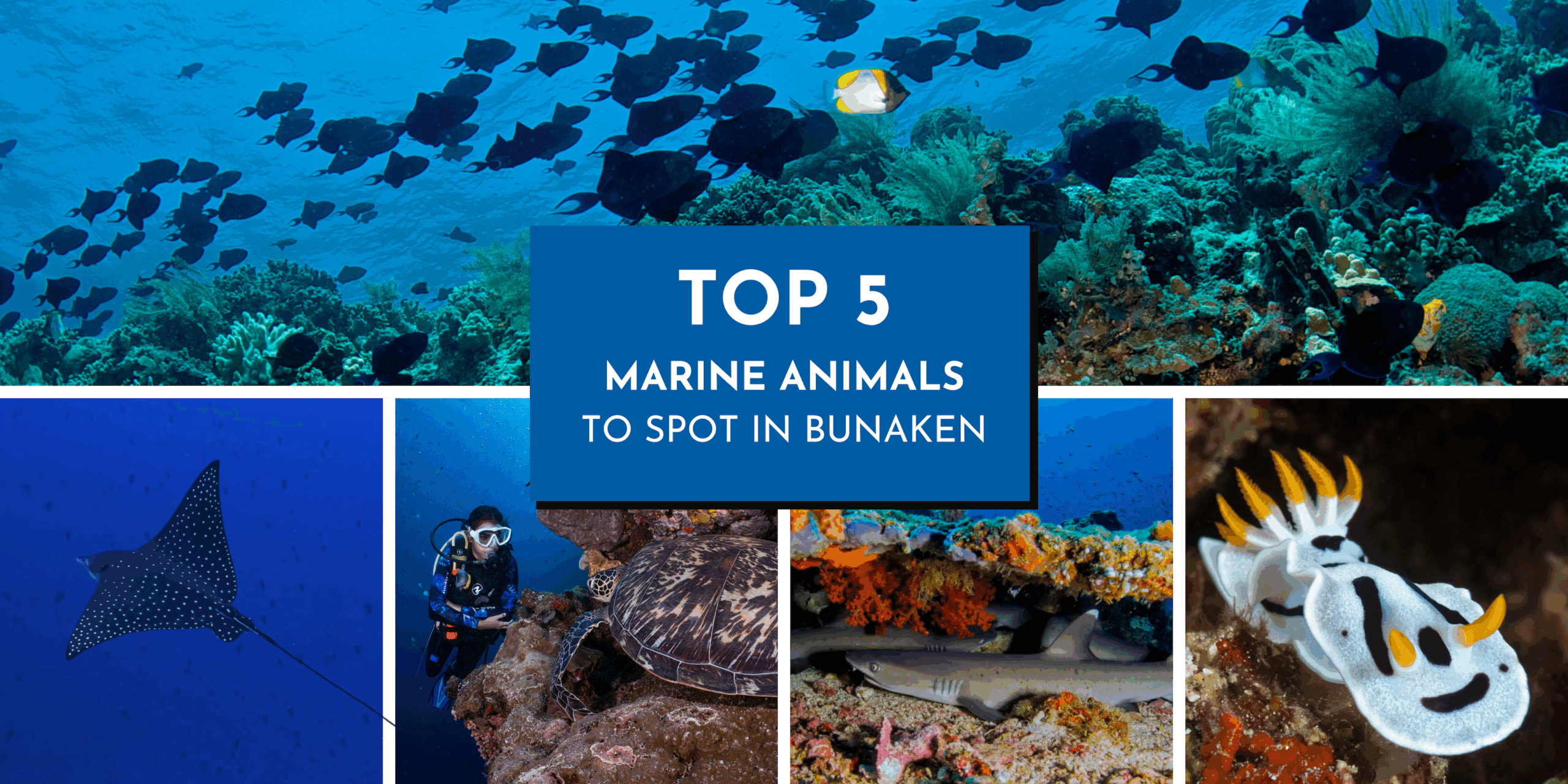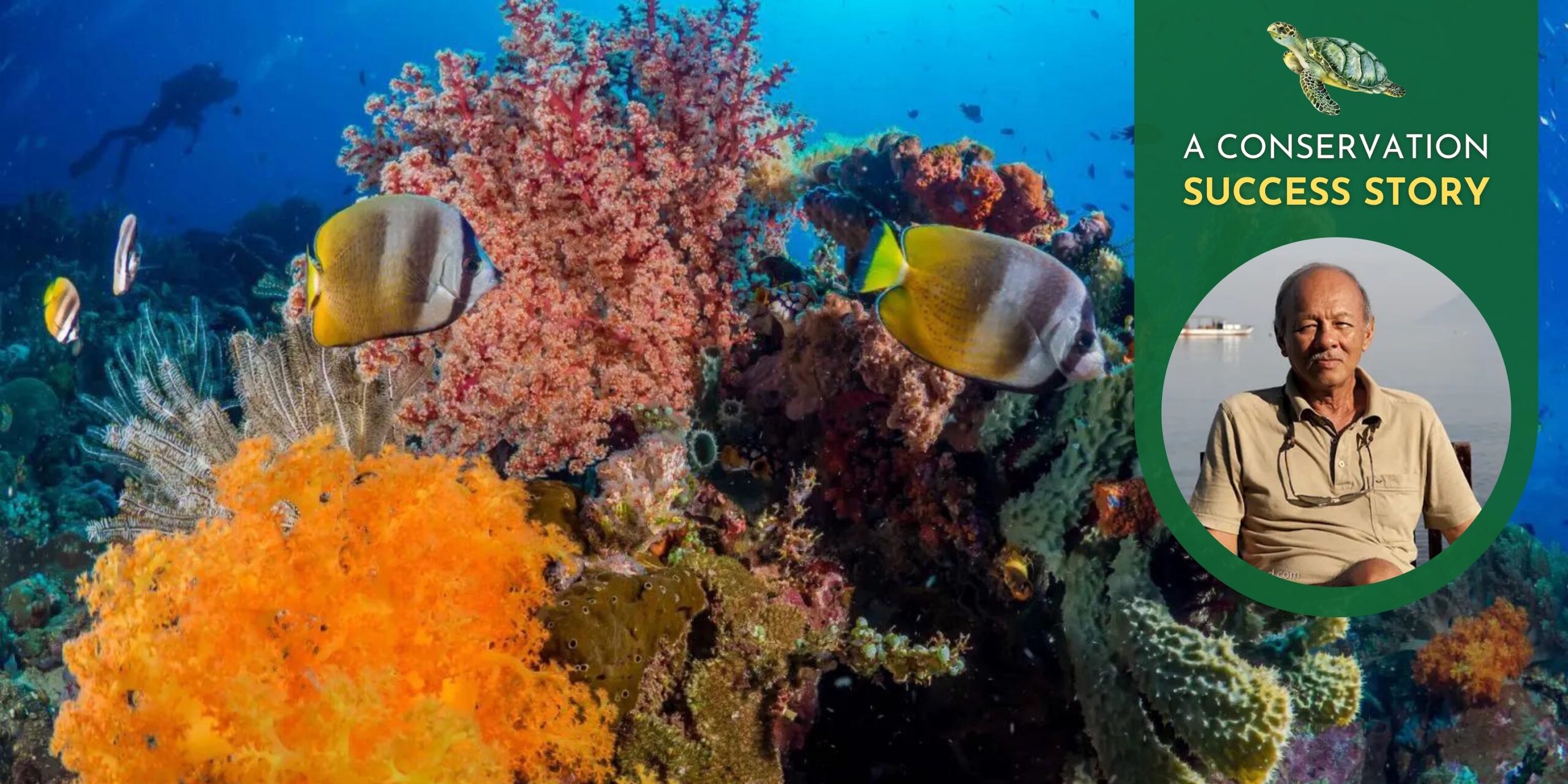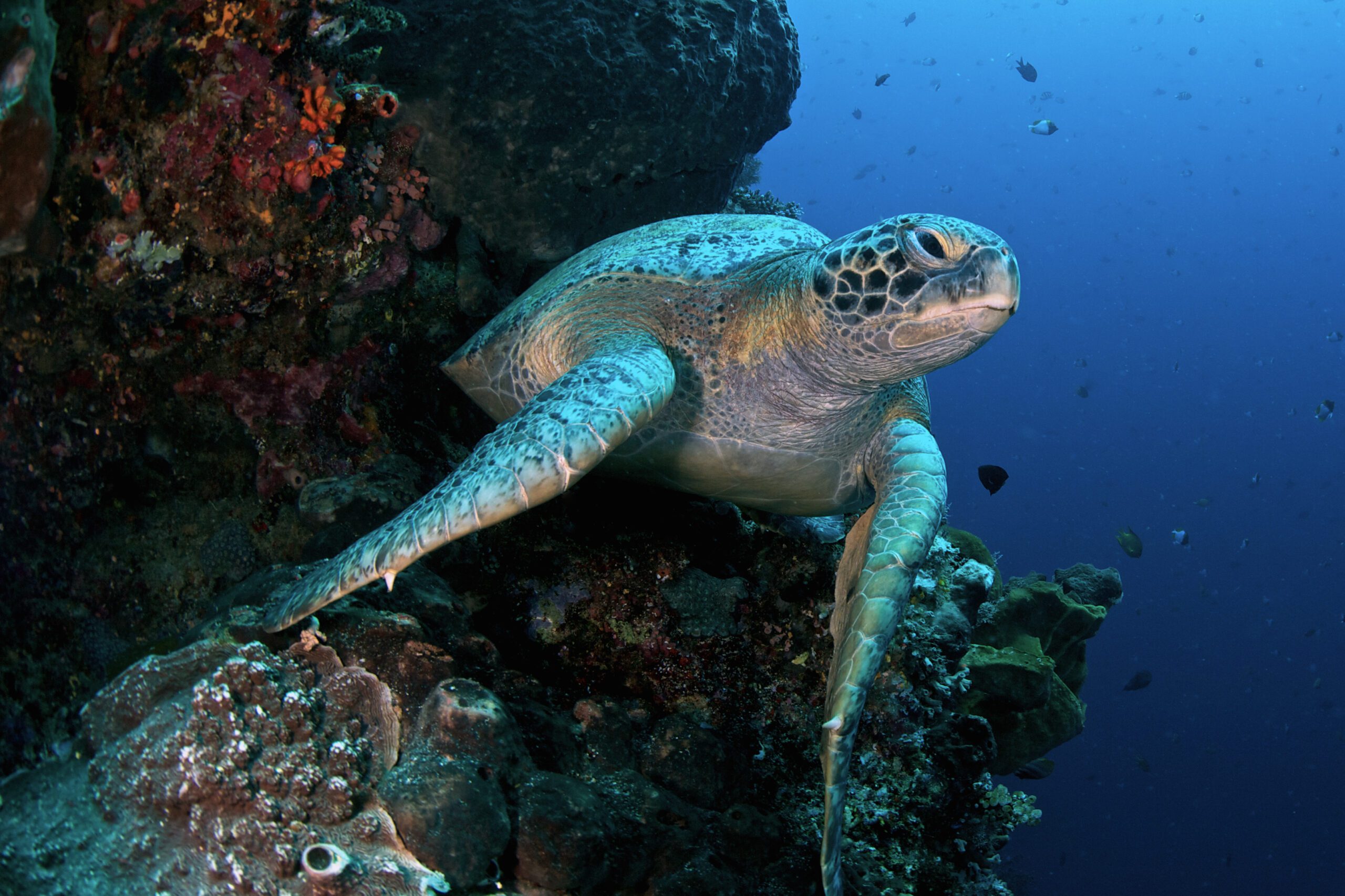
Green Sea Turtles – Chelonia Mydas
Green Sea Turtles are one of the top reasons for diving in the Bunaken Marine Park area where these Green Sea Turtles flourish both on the reef tops and on Bunaken’s walls which offer them many shelves and ledges on which to rest.
Let’s take a look at some fun facts about this sea creature!
Size and Diet
This larger species of sea turtle can weigh up to 300kg (average 150kg) and it’s carapace (shell) can be as long as 1.5 meters. Green Sea Turtles are herbivores as mature adults and feed on a mix of sea grass and algae but juveniles are omnivores and will consume mostly jellyfish, sponges and small mollusks. There is no shortage of food for them here at Murex dive sites!
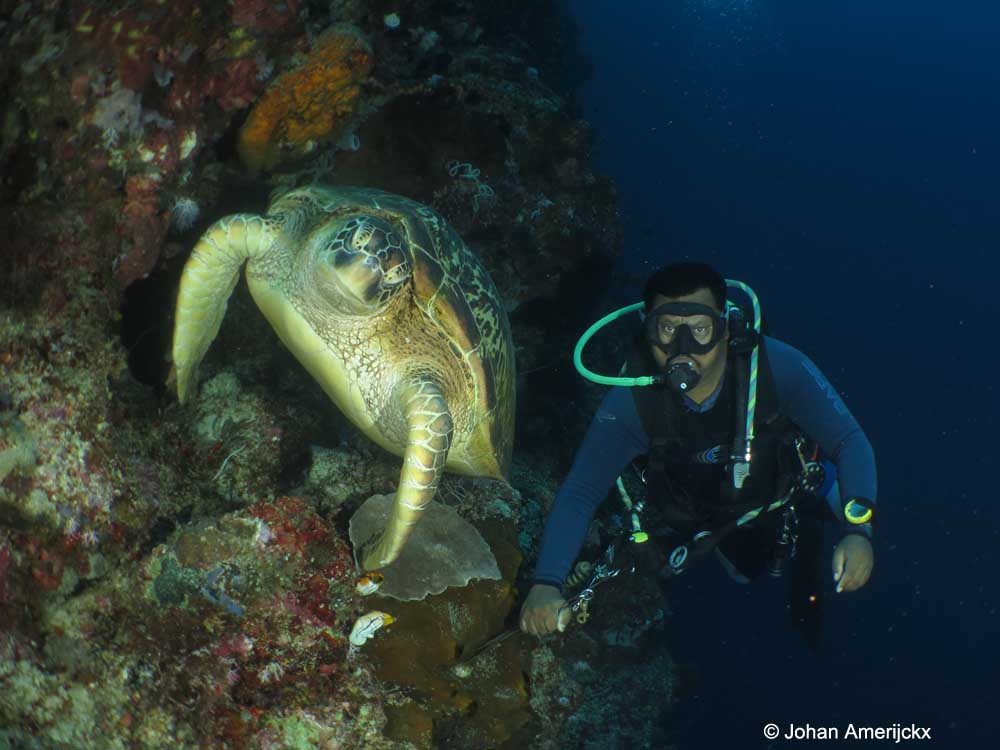
This Green Sea turtle next to dive guide Basrah shows how big they can become
Green Sea Turtle Features
The green sea turtle is distinguishable by the single pair of prefrontal scales on its small blunt head and its boney, ridgeless carapace which is made up of large, non-overlapping scutes. The green turtles name derives from the fat underneath its shell and the shell coloration varies widely from being pale or dark green to brown and even black and gray in some areas. On paler colored individuals it is easy to see radiating stripes on the carapace. Unlike hawksbill turtles, which are also commonly seen in North Sulawesi, the green sea turtle has only one visible claw per flipper rather than two.

Green Sea Turtles love the Bunaken walls with its shelves and ledges to rest
Green Sea Turtle Habitats
Green sea turtles prefer coastline habitats and are most frequently seen around islands, bays and protected shores – which is why we have such a healthy population here around Manado, Siladen and Bunaken – they generally do not live in the open ocean but they are capable of migrating over huge distances from feeding grounds to nesting areas – up to 1,400 miles. At Bunaken dive sites you will see them resting in crevices in the walls, on the reef top and swimming in the blue. Our Murex Guides are excellent at spotting their distinctive shells among the corals and coves.
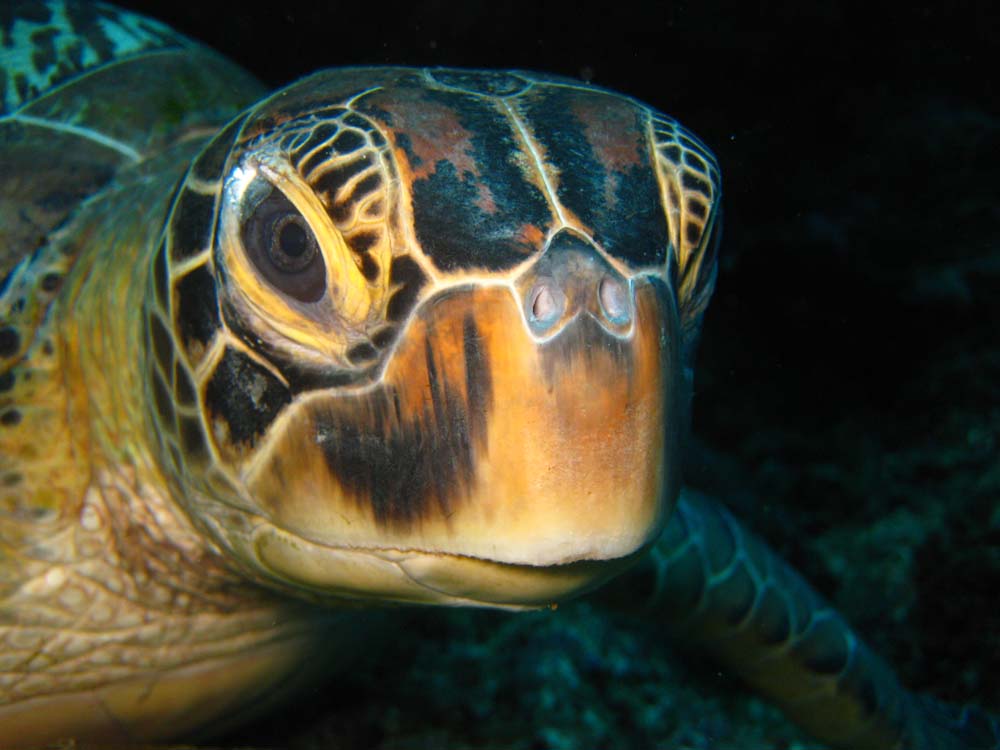
Nobody can resist this friendly face.
Reproduction
Females will return to the beach on which they were hatched for breeding which occurs only every 2 – 4 years. In a nesting year a female may nest up to 9 times with there being 75 – 150 eggs in each nest. As with most turtle species the percentage of eggs that hatch can be very low due to land dwelling predators and the percentage of juveniles reaching maturity is similarly low.
Conservation Efforts
Other factors that have led to the green sea turtle being listed by the IUCN as endangered are; the degradation of feeding and nesting habitats, mature individuals falling victim to long line fishing and drowning in fishing nets, ocean pollution and trade in green sea turtle eggs, meat, leather and shells.

Green sea turtle swimming in Bunaken
In Bunaken the turtles are protected so this is one of the best places to dive in Indonesia to see these amazing creatures living in safety. The turtles here nest on the islands of Bunaken, Siladen and Manado Tua and return year after year to lay eggs. They are also some of the largest green sea turtles you will see in Indonesia!
Green Sea Turtle Lifespan
A green sea turtles life span is estimated to be at least 80 years in the wild and once they have reached maturity they have few known natural predators. The best dive sites for seeing green turtles are Lekuan 1,2 and 3, Muka Kampung and Fukui – all of which we dive regularly from Murex Manado.
Dive and Stay at Murex Resorts
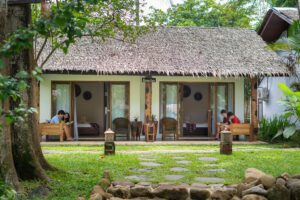
Guest accommodation at Murex Manado
After you’ve had your fill of turtles why not head up to our beautiful Murex Bangka resort for a pygmy seahorse adventure? The dive sites here have so much diversity and so much to offer that one resort is never enough! Contact us for more information about our rates or make your reservation now: reservations@murexresorts.com.


